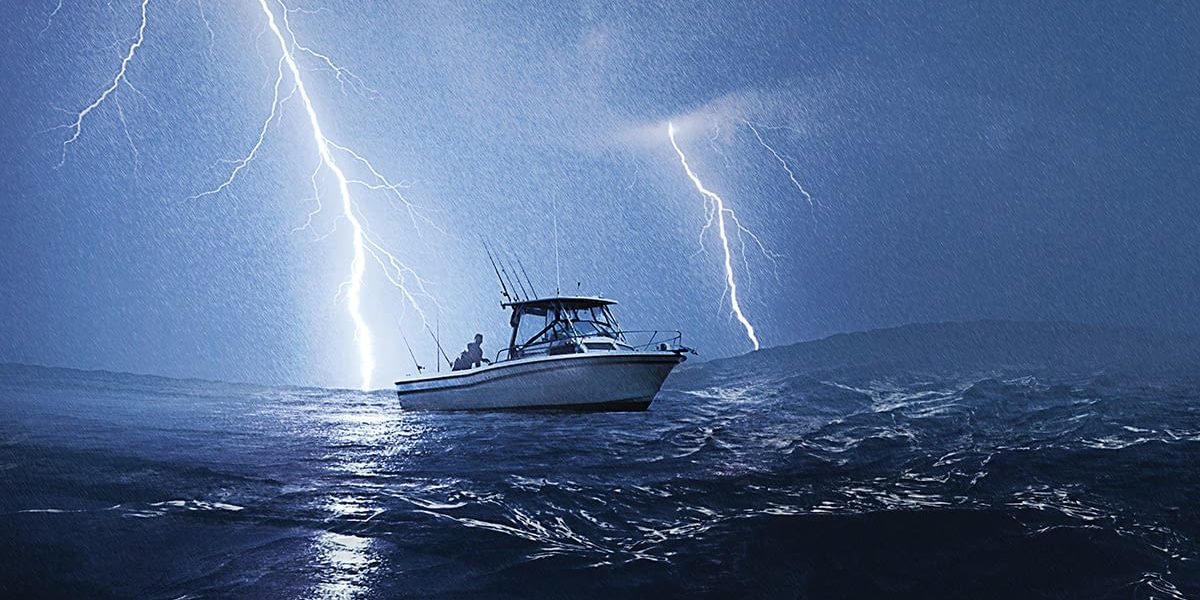It will be boating season once again soon, and it’s never too early to prepare for unexpected dangers. If you go boating much, you will eventually have to cope with a thunderstorm on the water. Even if you have checked the weather reports, conditions can change rapidly and surprise you with a fast-moving boomer. Or, you could have an engine malfunction or dead battery that leaves you immobile and unable to seek shelter. How do you prepare for such a situation?
Off-Season Preparation

Preparation is critical for coping with thunderstorms. (Courtesy BoatUS)
• Make sure your marine policy covers lightning damage.
• Put a NOAA weather app on your smart phone and become familiar with its use.
• Check your bonding system. Heavy gauge cable should connect large metal objects to multiple underwater grounding plates or drives/lower units.
• Learn to read the weather yourself by taking the USPS Weather Course. You will learn how weather systems form, behave, and move, where to get weather reports and forecasts on the internet, how to read weather maps, how to identify cloud types and more.
On The Water
• Be prepared and alert as you get on the water. Track weather conditions using NOAA Weather Radio on VHF channels 1-9. (However, localized “pop-up” storms may not be reported).
• Lower raised objects if you can, such as antennas, metal bimini frames, outriggers, etc., unless they are bonded to the grounding system.
• Take all metal objects out of your pockets. Get low in the boat.
• Disconnect the leads to electronic devices if you can, to help protect them from strikes or side flashes.
• If you have a microwave oven aboard, unplug it and put sensitive electronics inside. It will shield them from electromagnetic radiation generated by a nearby strike.
• Avoid touching any metal aboard during a storm, including metal steering wheels. Especially avoid holding a metal object in each hand that would create a current path through your body.
• Do not use a fixed VHF radio set during a storm. Use a handheld unit.
• Wait half an hour after the last lightning/thunder event to resume normal boating activities.
If You Sustain A Strike

Lightning bonding system using a grounding plate (courtesy BoatUS).
• Check for unconscious crew members—pulse and respiration. Conduct CPR if necessary.
• Check the bilge for leaks, which could be around any through-hull fitting or transducer.
• Plug any leaks. Tie lines to coats or blankets and pass them under the boat to position them over the leak and secure the lines to slow the leak. Then try to plug from the inside.
• If you are immobile because of engine damage, signal with your handheld VHF or flares and visual flares and visual distress signals to summon help.
• When you get to shore, consider hiring a surveyor to check for hidden damage for inclusion in an insurance claim.







